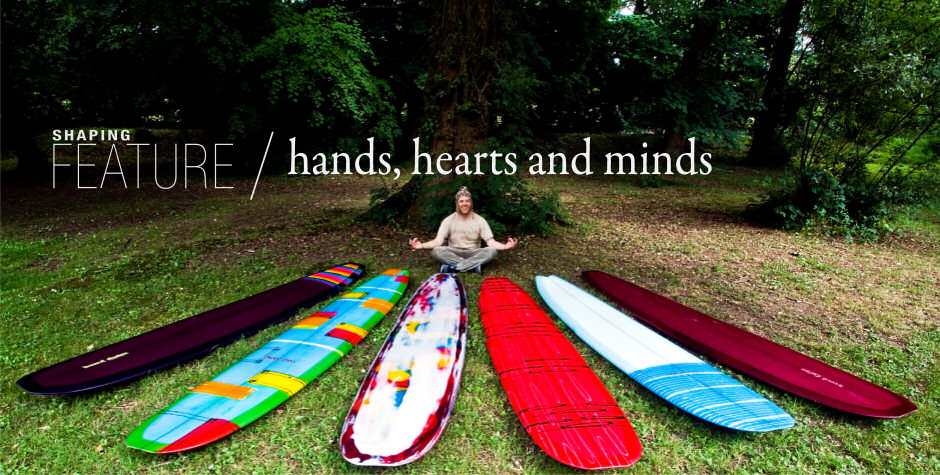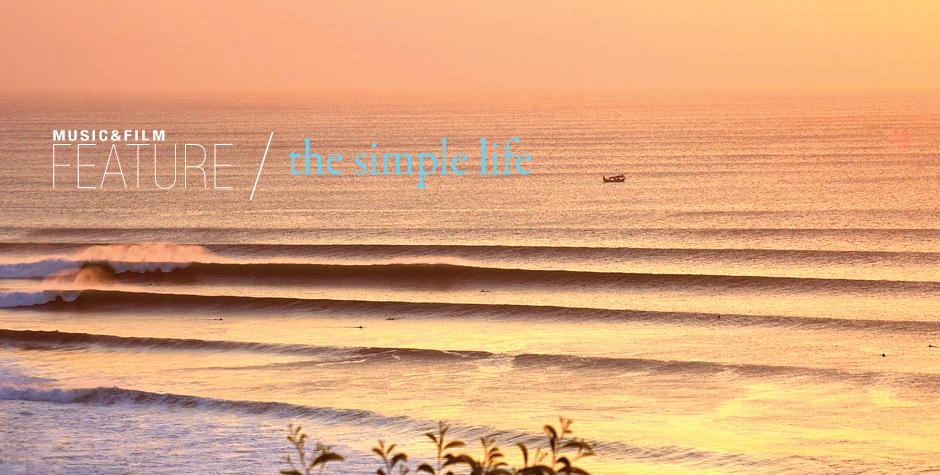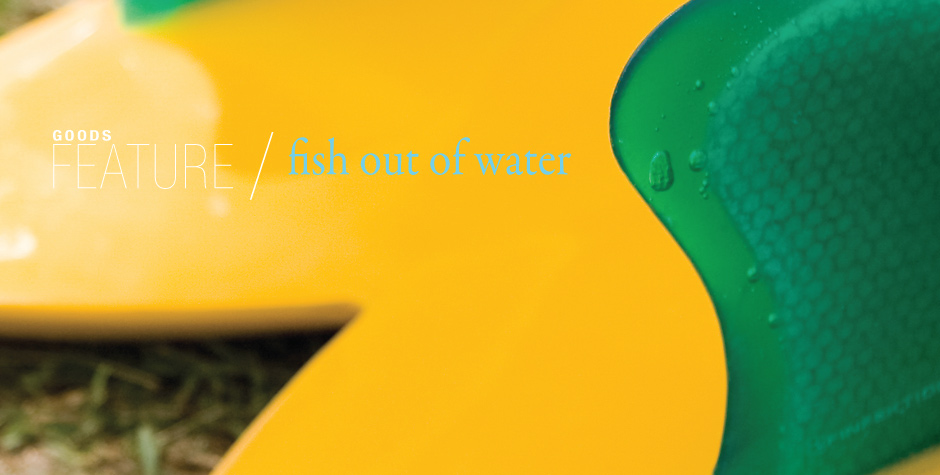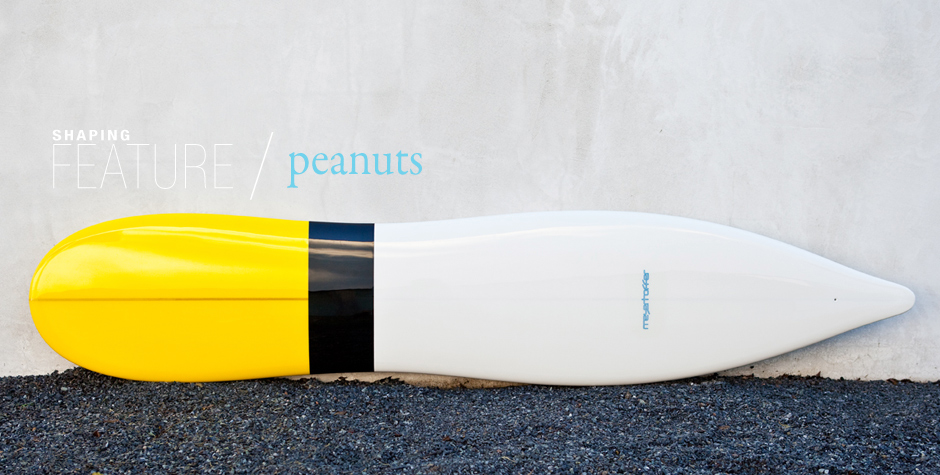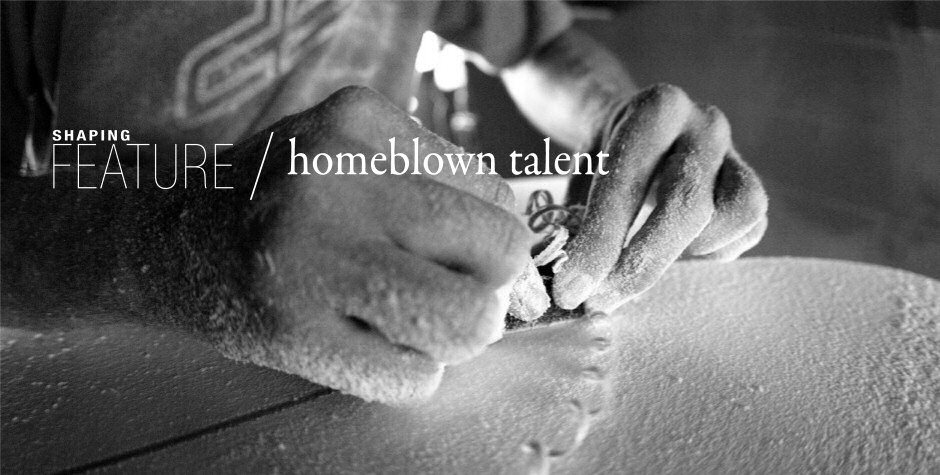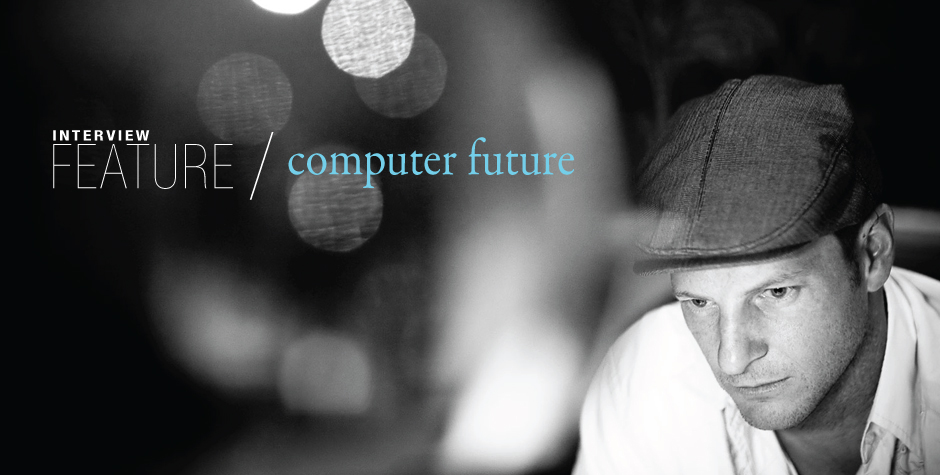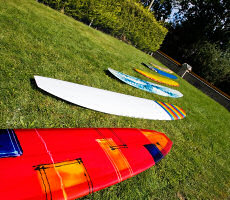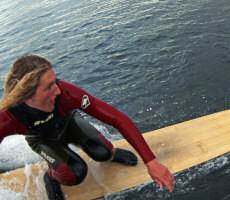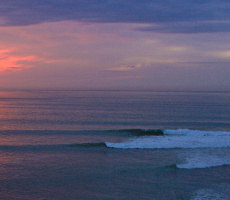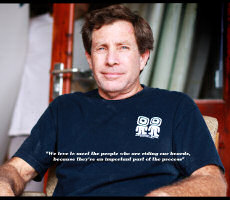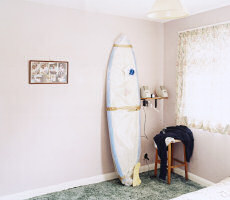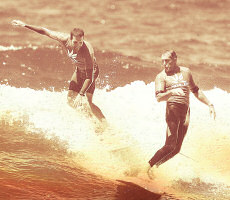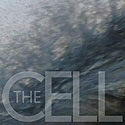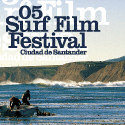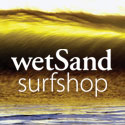Revolution Exhibition, Surf World Museum
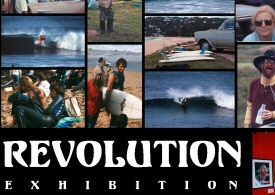 Is surfing sport or art? This is the question that lies at the heart of the Revolution Exhibition in Torquay, Australia.
Is surfing sport or art? This is the question that lies at the heart of the Revolution Exhibition in Torquay, Australia.
It was also the question that was most prominent in the minds of the world’s best surfers as they gathered for the 5th World Surfing Championship in 1970. The Revolution Exhibition is a celebration of the 40th anniversary of the 1970 World Championship at Bells Beach which became one of the world’s most controversial and colourful surfing events.
Revolution brings together for the first time a magnificent collection of treasured items from World Championship contenders, rare and unseen footage of the event, spectacular vintage surfboards and stunning photographs from the era that capture the colour and characters from Bells in 1970.
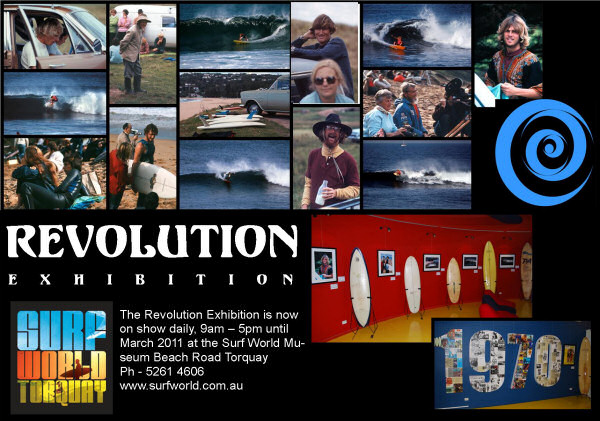
REVOLUTION Exhibition, Surf World Museum Torquay
Leading surfing figures, Drew Kampion, John Witzig, Randy Rarick and Gail Couper have loaned/provided significant items from the event for this historic celebration of surfing heritage. Enthusiastic local surfers have also raided their cupboards and sheds to supply vintage boards and material to help tell the story of this unique event.
The Revolution exhibition also explores the social context and broader cultural background for the contest. It was a turbulent and troubled time with issues such as the Vietnam War, civil rights, drugs, the draft and women’s lib providing a backdrop for an international contest at which many competitors seemed dazed and confused.
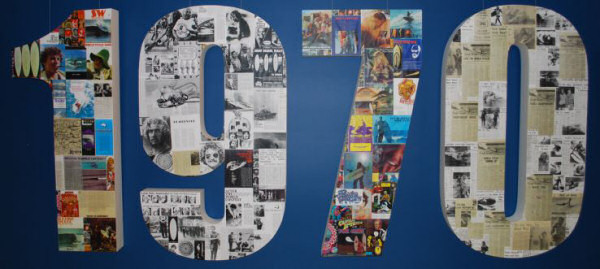
The 1970s Revolution
The contest result was a surprise as little known 18 year old American surfer Rolf Aurness took victory at Johanna Beach. Leading Australian surfers Wayne Lynch, Nat Young, Peter Drouyn, Ted Spencer and “Dapper” Oliver were all expected to do well, but many failed to fully embrace the contest. As a result their performances were inconsistent and they were ultimately out gunned by Aurness.
As meteoric and surprising as Rolf Aurness’ rise through the surfing ranks was, his response to winning the World Championship was just as rapid and astounding. He simply walked away from competitive surfing and within a short time was gone from the surfing scene altogether. Aurness followed a unique internal timeline with a surfing career that was as brilliant as it was brief.
Equipment played a large part in the surfing performance at the 1970 World Titles. Most Australian surfers were riding seriously short surfboards, under 6’ (180cm) with most of the American surfers riding longer boards more suited to the long and powerful Victorian waves. At Bells the contrast wasn’t that pronounced, but when the contest was moved to the more powerful waves at Johanna the short boards were not ideal. The short boards didn’t allow the surfers to perform at their peak with Nat Young later admitting that “Rolf simply out surfed us all, he had better equipment and was a worthy winner of the event”.
1964 World Champion Midget Farrelly was the best performed Australian at the event finishing second to Rolf Aurness. Midget’s style and grace under pressure overshadowed the efforts of the evolving generation of young Australian surfers. Young Narrabeen surfer Terry Fitzgerald made an impression at an event he was lucky to be competing at. Fitzy was a last minute inclusion in the event after Ted Spencer decided to walk away from the competition.
Terry Fitzgerald was one of many young surfers at the event that would go on to become the first generation of professional surfers. Shaun Thomson, Gerry Lopez, Michael Peterson, Reno Abellira, Ian Cairns, Mike Tomson, Margo Oberg, Jerricho Poppler and Rell Sunn were all still competing in the following years when surfing went pro.
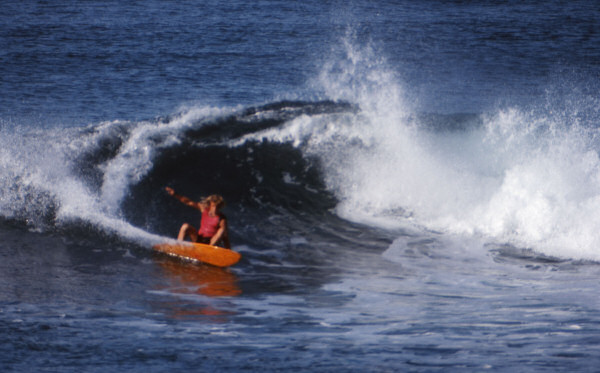
Terry Fitzgerald cutback at the 1970 World Titles
Competitors at the 1970 World Surfing Championship at Bells Beach planted indigenous trees, to help conserve a site that in 1973 became the world’s first dedicated surfing reserve. That tradition was maintained for many years with an annual conservation contest being run to help revegetate the area.

Simon Buttonshaw 1970 World Titles Bells Beach
There were many problems that organizers of the 1970 World Surfing Titles had to overcome. Poor surf, disenchanted surf stars, having the venue prepared in time and a never ending succession of civic events all caused concern. It was the event’s financial situation that nearly sank the competition, Premier Sir Henry Bolte saved the contest by providing a $20.000 grant, much to the relief of event organizers Tony Olsson and Stan Couper.
The parallels between the 1970 World Titles and this years Rip Curl Pro are amazing. In 1970 as well as 2010 the world’s best surfers gathered at Bells beach only to be greeted by a run of poor surf. The contest was moved to Johanna for the finals with an American surfer coming out on top. The scoring system, judging and how surfing performance should appropriately be assessed were as much a subject of discussion this year as it was in 1970.
Many of the issues surrounding the event at Bells in 1970 are still being discussed today. Numerous people at the time felt that developments at Bells were at odds with the natural value of the place. In 2010 the Surfcoast Shire is once again looking at who accesses Bells and what measures need to be taken to best protect what has become an iconic Australian surf beach.
Revolution will be the first exhibition to fully utilize Surf World Torquay’s recently renovated temporary exhibition space. The exhibition will run until Easter 2011.
For more information please contact Craig Baird, Surf World Museum Torquay & Revolution Exhibition Curator. Telephone: (03) 5261 4606 [email protected] or www.surfworld.com.au
